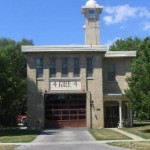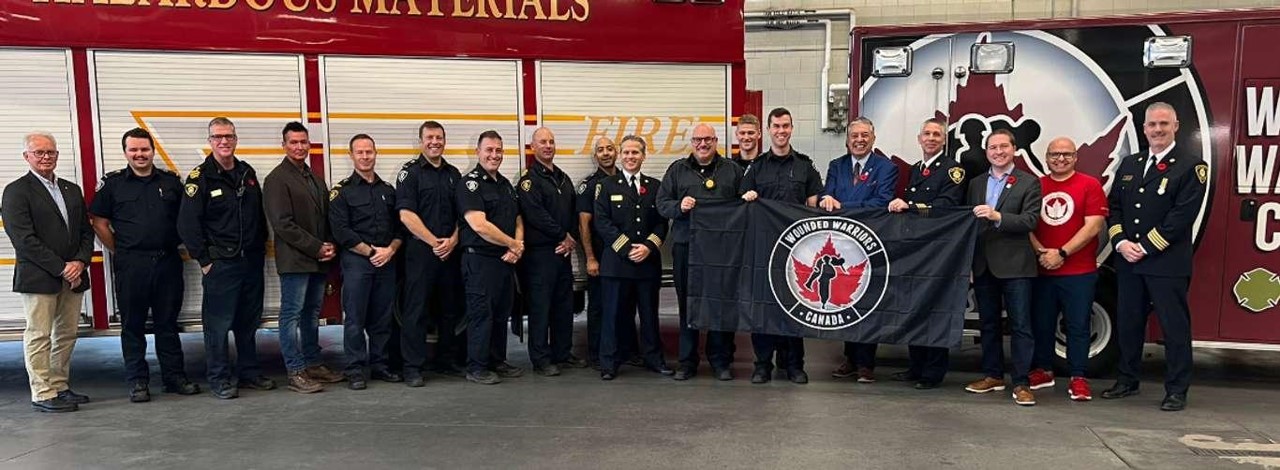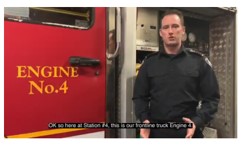No. 4 Fire Station
807 Colborne Street, London
In 1842, two years after London’s incorporation as a village, its citizens organized a volunteer fire department. A by-law required householders to keep fire buckets in their homes. Fires were fought by lines of people who passed water buckets from a nearby source to the fire.
The Great Fire of London in 1845 destroyed more than 300 buildings and prompted such measures as the placement of water tanks at intersections and the acquisition of a handoperated pump engine. A large fire bell replaced the trumpets used to alert people to fires.
The first fire hall was erected on Carling Street in 1847 and was replaced by one on King Street in 1853. This hall served the entire city until new fire stations were added: No. 2 on Rectory Street in 1885 and No. 3 on Bruce Street in 1891. A permanent, paid firefighting force had been established in 1871.
At the turn of the twentieth century, Fire Chief John A. Roe requested a new station to serve the north end of the city. In 1909, No. 4 Fire Station was built on the corner of Colborne and St. James streets, and No. 5 was built on Adelaide Street. Architect Arthur E. Nutter designed both stations in an abstract Italianate style, featuring a simplified Tuscan tower, broad eaves, and pilasters above the fire hall door. These stations complement the residential streetscape.
In 1912, London purchased its first motorized fire truck. By 1925, the fire department was completely motorized with three pump engines, three chemical and hose trucks, two ladder trucks, one aerial ladder truck, and two chiefs’ cars. In 1999, there were eleven fire stations in London equipped with ten engines, nine special units, six tankers, three aerial ladders, and two chiefs’ cars.
Link to view the complete “Walking Guide to Historic Sites in London”
via London Public Library.
No. 4 Fire Station
807 Colborne Street, London
In 1842, two years after London’s incorporation as a village, its citizens organized a volunteer fire department. A by-law required householders to keep fire buckets in their homes. Fires were fought by lines of people who passed water buckets from a nearby source to the fire.
The Great Fire of London in 1845 destroyed more than 300 buildings and prompted such measures as the placement of water tanks at intersections and the acquisition of a handoperated pump engine. A large fire bell replaced the trumpets used to alert people to fires.
The first fire hall was erected on Carling Street in 1847 and was replaced by one on King Street in 1853. This hall served the entire city until new fire stations were added: No. 2 on Rectory Street in 1885 and No. 3 on Bruce Street in 1891. A permanent, paid firefighting force had been established in 1871.
At the turn of the twentieth century, Fire Chief John A. Roe requested a new station to serve the north end of the city. In 1909, No. 4 Fire Station was built on the corner of Colborne and St. James streets, and No. 5 was built on Adelaide Street. Architect Arthur E. Nutter designed both stations in an abstract Italianate style, featuring a simplified Tuscan tower, broad eaves, and pilasters above the fire hall door. These stations complement the residential streetscape.
In 1912, London purchased its first motorized fire truck. By 1925, the fire department was completely motorized with three pump engines, three chemical and hose trucks, two ladder trucks, one aerial ladder truck, and two chiefs’ cars. In 1999, there were eleven fire stations in London equipped with ten engines, nine special units, six tankers, three aerial ladders, and two chiefs’ cars.
Link to view the complete “Walking Guide to Historic Sites in London”
via London Public Library.






